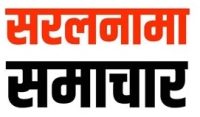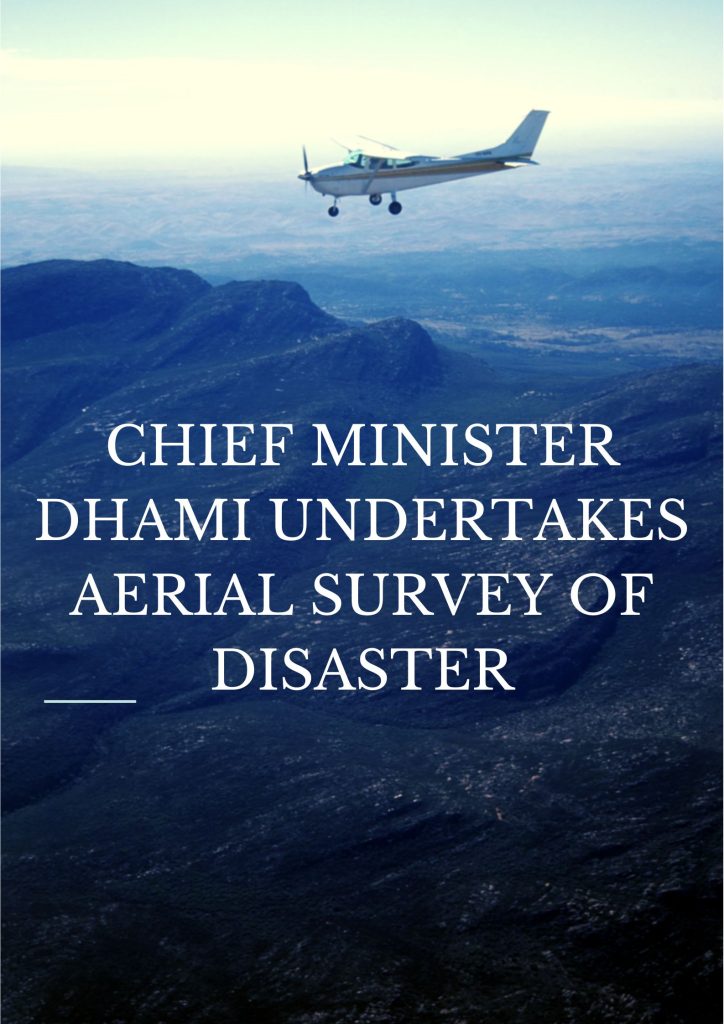Rudraprayag, 06 August 2024 — In a decisive move to address the recent calamity affecting the Kedargath region, Chief Minister Pushkar Singh Dhami arrived in Rudraprayag today to conduct an aerial survey of the disaster-stricken areas. This visit aims to provide a clearer understanding of the extent of the damage and to spearhead coordinated relief efforts.
The catastrophic events that have impacted Kedargath have led to widespread destruction, affecting infrastructure, homes, and vital services. In light of the severity of the situation, Chief Minister Dhami’s aerial survey was crucial in assessing the scale of the disaster from a broader perspective. The survey allowed for a comprehensive evaluation of the affected areas, providing insights that will be instrumental in guiding the response efforts.
During the aerial survey, Chief Minister Dhami observed the extensive damage caused by the disaster. The survey highlighted the significant impact on transportation routes, which are essential for delivering relief supplies and ensuring the movement of rescue teams. The extent of the destruction has posed challenges for ground operations, making the aerial assessment an invaluable tool for planning and coordination.
Government Response and Relief Measures
In response to the findings from the aerial survey, the state government has announced immediate relief measures aimed at providing support to those affected. Chief Minister Dhami emphasized the urgency of the situation and the need for a swift and organized response. The government has mobilized resources and is working closely with various agencies to ensure that aid reaches the affected areas as quickly as possible.
Relief efforts are focused on several key areas, including the distribution of essential supplies, medical aid, and temporary shelter for displaced individuals. Emergency teams have been deployed to assist in rescue operations and to provide immediate support to communities in distress. The state government is also coordinating with national and local organizations to facilitate a comprehensive relief strategy.
The Chief Minister’s visit underscores the government’s commitment to addressing the crisis and supporting the affected communities. By conducting the aerial survey, Chief Minister Dhami has demonstrated a proactive approach to disaster management, ensuring that the response is both timely and effective.
Impact on Infrastructure and Communities
The disaster has had a profound impact on the infrastructure of the Kedargath region. Key roads and bridges have been damaged or destroyed, complicating efforts to deliver aid and conduct rescue operations. The destruction of infrastructure has also disrupted essential services, including access to healthcare, education, and other critical facilities.
Communities in the affected areas are facing significant challenges as they deal with the aftermath of the disaster. Many residents have been displaced from their homes, and there is a pressing need for temporary housing and support services. The state government is working to address these needs by providing emergency shelters and coordinating with relief organizations to offer support to those in need.
The aerial survey conducted by Chief Minister Dhami has provided valuable information on the extent of the damage and the specific areas that require immediate attention. This information will be used to prioritize relief efforts and ensure that resources are allocated where they are most needed.
Coordination with National and Local Agencies
Effective disaster response requires coordination between various agencies and organizations. The state government is collaborating with national and local agencies to streamline relief efforts and ensure a unified approach to addressing the crisis. This collaboration includes coordination with the Indian Army, the National Disaster Response Force (NDRF), and other relevant bodies involved in rescue and relief operations.
The government is also engaging with local communities to understand their needs and provide targeted assistance. Community leaders and local organizations are playing a crucial role in identifying areas of greatest need and facilitating the delivery of aid. This community-based approach is essential for ensuring that relief efforts are effective and responsive to the specific challenges faced by affected individuals.
Looking Ahead: Recovery and Rebuilding
As the immediate relief efforts continue, the focus will gradually shift to recovery and rebuilding. The state government, along with national and local partners, will be working on long-term plans to restore normalcy in the Kedargath region. This will involve repairing damaged infrastructure, providing support for economic recovery, and addressing the psychological and social impacts of the disaster on affected communities.
Chief Minister Dhami has assured the public that the government is committed to supporting the recovery process and ensuring that affected communities receive the assistance they need. The aerial survey has provided a clear picture of the challenges ahead, and the government is preparing to address these challenges with a comprehensive and coordinated approach.

